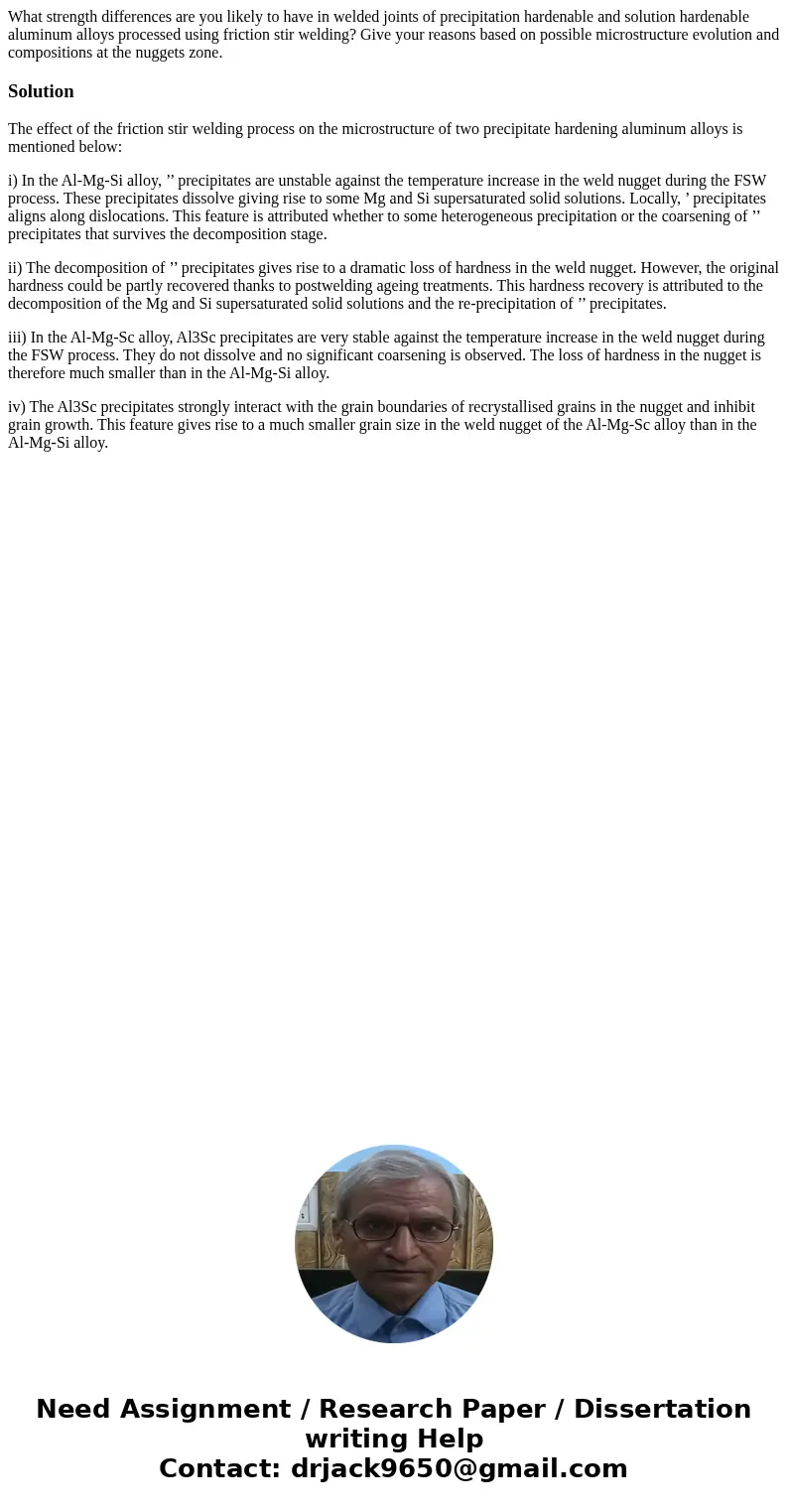What strength differences are you likely to have in welded j
What strength differences are you likely to have in welded joints of precipitation hardenable and solution hardenable aluminum alloys processed using friction stir welding? Give your reasons based on possible microstructure evolution and compositions at the nuggets zone.
Solution
The effect of the friction stir welding process on the microstructure of two precipitate hardening aluminum alloys is mentioned below:
i) In the Al-Mg-Si alloy, ’’ precipitates are unstable against the temperature increase in the weld nugget during the FSW process. These precipitates dissolve giving rise to some Mg and Si supersaturated solid solutions. Locally, ’ precipitates aligns along dislocations. This feature is attributed whether to some heterogeneous precipitation or the coarsening of ’’ precipitates that survives the decomposition stage.
ii) The decomposition of ’’ precipitates gives rise to a dramatic loss of hardness in the weld nugget. However, the original hardness could be partly recovered thanks to postwelding ageing treatments. This hardness recovery is attributed to the decomposition of the Mg and Si supersaturated solid solutions and the re-precipitation of ’’ precipitates.
iii) In the Al-Mg-Sc alloy, Al3Sc precipitates are very stable against the temperature increase in the weld nugget during the FSW process. They do not dissolve and no significant coarsening is observed. The loss of hardness in the nugget is therefore much smaller than in the Al-Mg-Si alloy.
iv) The Al3Sc precipitates strongly interact with the grain boundaries of recrystallised grains in the nugget and inhibit grain growth. This feature gives rise to a much smaller grain size in the weld nugget of the Al-Mg-Sc alloy than in the Al-Mg-Si alloy.

 Homework Sourse
Homework Sourse